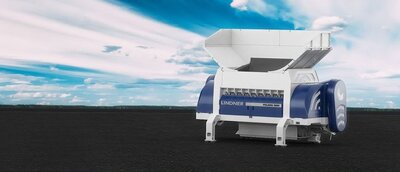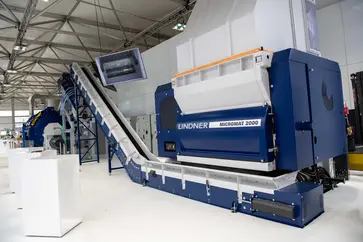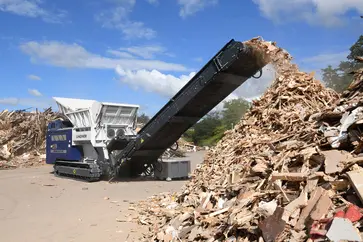Polaris 1800 – extension of the successful series
SRF shredding in one go – with only one machine: the market launch of the Polaris at IFAT 2016 triggered a boom in demand for Lindner's innovative, highly specialized shredder. The new Polaris 1800 model has been introduced recently.
The Polaris was developed for the one-step production of medium-calorific solid recovered fuel (SRF) which is used for incineration in calciners. The Lindner Polaris shreds municipal solid, commercial and industrial waste to defined final output sizes in one step. ‘Without exaggerating,’ says product manager Stefan Scheiflinger-Ehrenwerth, ‘we have succeeded in establishing the Polaris as a synonym for one-step, cost-efficient SRF processing in the industry. As a leading supplier, Lindner provides the solution for feed materials that contain foreign objects, or are wet and heavy, bulky or generally difficult – as often encountered by waste management companies.’
This very resistance to foreign objects distinguishes all the shredders offered by the Austrian manufacturer based in Spittal an der Drau/Carinthia, which is celebrating its 70th anniversary this year. The market launch of the Polaris at IFAT two years ago aroused great interest worldwide in the system from SRF producers and waste management companies alike. Demand is strong and the order books are full. The stationary single-shaft shredder with a throughput of up to 35 metric tons per hour (Polaris 2800) has become a bestseller in no time.
Further proof of expertise
Lindner expects this run to continue and showed the latest model of this innovative series: the Polaris 1800. Stefan Scheiflinger-Ehrenwerth: ‘The new Polaris 1800 is even further proof of our expertise in this growth segment.’
On the one hand, this smaller model of the series is aimed at companies that still have capacities for material processing and want to enter the market for medium-calorific SRF. On the other hand, the Polaris 1800 is ideal for those companies in regions that do not have extreme amounts that need to be processed. ‘Furthermore, the Polaris 1800 also has enormous potential for use in emerging markets that are only just beginning to process waste. Since structures have to be built up there first, this solution is the ideal entry model,’ explains Stefan Scheiflinger-Ehrenwerth.
Most efficient in terms of costs per ton
The Lindner Polaris 1800 has an output rate of up to 16 metric tons per hour and shreds almost any feed material, in particular, industrial, commercial and municipal solid waste. Polaris users love the machine’s enormous power thanks to the countershaft drive, flywheel mass effect, optimised material feeding (internal pusher for increased volumes and easy feeding), the hydraulic maintenance door (for fast removal of foreign objects and convenient rotor maintenance) and last but not least the robustness and durability of the cutting system’s cutters.
The Polaris series also sports a newly developed cutting system and is – compared to all other single-shaft shredders – the most efficient in terms of costs per ton. This is confirmed by a study conducted by the Chair of Waste Processing Technology and Waste Management of the University of Leoben, Austria in May 2017. According to the results, the Polaris is the one-step processing system par excellence and is both technically and economically more advanced than competitor machines. The countershaft drive functions like a large flywheel mass acting like a battery. If the Polaris is not fully utilised during operation, the mass charges itself and can therefore absorb load peaks if necessary. This stored energy allows for continuous shredding and ensures the highest throughput rates even with difficult materials.



